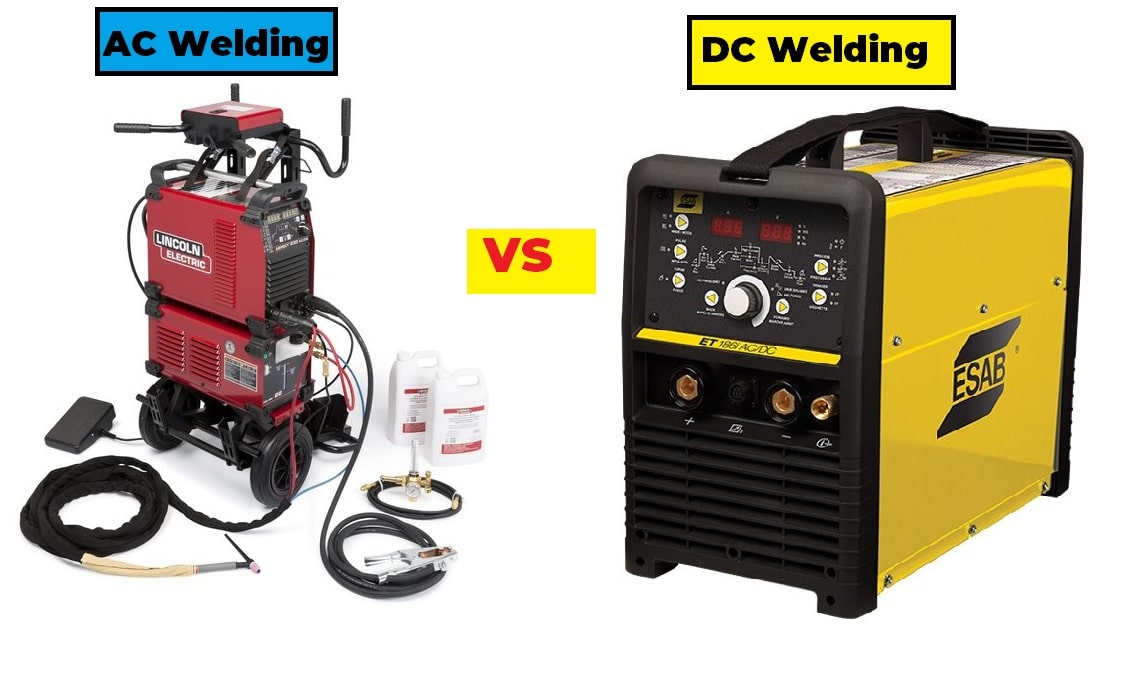Any welding activity is only processed once you decide what the power source will be! Whether it will be AC or DC! Most of you know that AC stands for alternating current, and DC is abbreviated as direct current. DC is the widely embraced and preferred power source for welding operations.
However, opt for an AC power source if you are specifically performing TIG welding. AC source plays the most important role in welding aluminum and similar kind of metals. Here we explain more about Ac vs Dc welding below:
All About The AC And DC Power Sources Involved In Welding
Beginner-level welders often need clarification on welding polarities and electric current and help determine the correct power source. Here you will know all info on the AC and DC currents.
The AC output especially meant to perform TIG welding, constantly switches the polarity and current. Both of them flow back and forth. And the DC output meant to carry out basic welding applications keep the polarity completely uniform and lets the current flow in one direction only.
AC- Only Meant For TIG Welding
Most importantly, the AC power source is only appropriate to be conducted on TIG welding and not for any other welding job. Preferring the alternating current source for basic welding tasks extinguishes the arc and pushes it to reignite every time the polarity is going to be switched. In addition, AC leads to arc instability when performed on MIG welding process.
What is DC Welding?
DC welding involves the use of direct electric current. It has a constant polarity flow that moves in one single direction. Stable arcs remain produced because the arc’s current and the magnetic field are in the 100% constant mode.
Moreover, the DC electric current circuit is completed using ground clamps and electrode holders. Or you can also use the TIG/MIG torch. Remember that selecting the right polarity will end up giving you a good weld. Correctly connect the electrodes and ground clamps and ensure the production of good weld quality.
Pros of DC Welding
Here you can check out how DC welding is a good pick:
- You get a smoother welding output and a more stable arc.
- Fewer spatters are there.
- Opting for the DC negative, you can ensure faster and speedier deposition rates when welding thin metals.
- Preferring DC positive promises greater penetration.
- The weld shape looks highly uniform and straight.
Cons of DC Welding
Below we have mentioned why DC welding is not a suitable pick:
- You will face lots of challenges when welding magnetized metal. The arc blow and deflection will not be in your favor.
- DC TIG and SMAW fail to weld metals like aluminum.
- Investing in DC equipment looks relatively expensive.
- At times, it will be unable for you to fix arc blow problems.
When to Use DC Welding?
You can opt for this technique for joining thinner metals. Have it for stick welding, TIG, MIG, Flux-cored welding, and overhead and vertical applications. You can weld cast iron, copper, brass, titanium, mild steel, bronze, and nickel.
What is AC Welding?
Moving to the explanation of AC welding, this process is commenced using the alternating current power source. The unique quality of this current is that it reverses its direction multiple times per second. For example, a 60-hertz current will change its polarity approximately 120 times per second. Furthermore, the magnetic field and current keep on reversing the direction. You spot no deflection of the arc too.
Pros of AC Welding
Below you can see the positive side of AC welding:
- The alternating current flowing between the positive and negative polarity promises a steadier arc, and you can weld the magnetic parts easily.
- No problem linked with arc blow will be encountered.
- You can efficiently and effectively weld aluminum and magnesium.
- The voltage does not drop even if you use long leads.
- Processes like TIG and stick welding benefit greatly from alternating current power sources.
- Buying AC stick welding machines remains cost-friendly.
- The stick welding electrodes function in the best manner using AC.
- AC output generates a stable arc and prevents arc blow as well as arc deflection.
Cons of AC Welding
Here we have explained the downside of AC welding:
- It produces more spatters, and weld quality does not come out that smooth.
- This technique seems tough and challenging to handle.
- AC creates a less stable electric arc whenever you weld mild and stainless steel.
When to Use AC Welding?
Applications linked with AC TIG and stick welding opts for the alternating current source. You can weld both magnetized and non-magnetized metals. Note that if you switch to AC positive, you can quickly remove oxidation and contamination from the metal surface. It is undoubtedly an extremely safe and reliable technique to weld aluminum.
You can implement the AC welding technique in industries like shipbuilding. It is widely used to seam heavy plate welds and do the filling fast. Besides, you can adopt this process for repairing machinery.
Thus, the direct current power source is a better choice for performing all welding tasks except TIG welding and specifically welding aluminum. However, professional welders support both of these processes and choose the method that syncs well with their project needs and metal type.
Conclusion
Reminding you again! DC is the current direct current power source used to conduct basic welding processes. Here the polarity is uniform, and the current flows in one direction.
Rest, AC is the alternating current power source intended to perform TIG welding-related tasks. In an AC source, the polarity and current frequently switch. You can keep tuned with us, and some more technical-based information on the AC and DC power sources will be shared with you. If you are a welder by profession, you can let us know which power source is more suitable and preferable.
